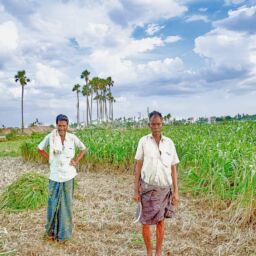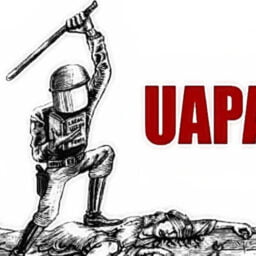INTRODUCTION
Fisheries and aquaculture are key economic resources in India, and they supply food for millions of people. Like those in any other business, laws, and regulations serve to keep the practice safe, healthy, and sustainable. Global aquaculture has seen a tremendous increase in the production of commercial aquatic plants. In India, the output of fish has increased at an exponential rate during the previous 30 years. India is the world’s second-largest producer of fisheries and the third-largest producer of aquaculture. More than 14 million people are employed in the fishing industry, which contributes more than 1% to the national GDP.[1]
Let’s take a look at some of the major issues confronting India’s aquaculture industry, as well as the significant conservation legislation and regulations that apply to Indian fisheries.
TECHNICAL CHALLENGES[2]
- The fishing business in the country is reliant on a few fish species – carps, pacu, and pangasius – and increasing this base will boost fish production.
- Overproduction focusing on fewer species results in an overstock of specific fish species, lowering prices and increasing volatility.
- In India, there are no additional aqua feed-consuming species or high-value fish that should be considered when introducing new species. For example, tilapia farming has yet to take off in the country.
- Inadequate hatchery technology for new species introduction, which could include freshwater, brackish, and marine species.
- Diversification of species will assist to keep costs stable while also driving up demand for formulated aquafeeds.
- Classical freshwater fish farming methods – large ponds, no water exchange, no draining, and no bottom sediment removal – are still in use, which can lead to disease-promoting conditions.
ECONOMIC CHALLENGES[3]
- Poor quality fish delivered in poorly managed production systems has an impact on customer acceptability and preferences.
- The lack of proper cold chain and distribution systems has an impact on availability and marketing as a perishable item.
- Declining agricultural prices are not supportive of low-value species’ economic viability. At the low end, India should seek to adopt fish species and marketing techniques that provide farm-gate values ranging from INR 120/140 per kg (the US $1.72 to 2.00 per kg) to INR 250/300 per kg ($3.60 to 4.30 per kg) for high-value, premium fish.[4] Fish species from freshwater, brackish water, and the sea should all be included.
DEEP-GREEN POND WATER: The presence of excessive algae in the water, which is the result of an oversupply of nutrients such as phosphorus, causes the water to turn a deep green colour, especially when the water is warm and the weather is calm. Fish waste is broken down into nitrate, which is food for plants and algae, by helpful bacteria in a sequence of steps, resulting in green pond water even with heavy loads. Algal blooms are defined by the World Health Organization (WHO)[5] as a condition in which the population of algal cells surpasses 100,000 cells per ml. Blooming problems are most common during the summer months.
RED LAYER ON POND WATER: Excess iron or EU glenoid algae in the pond water cause the red layer on the water’s surface to appear. As a result, food and oxygen are scarce in the water.
Oxygen depletion in pond and fish gasping for air[6]:A challenge that fish growers frequently experience. Fish usually begin floating and clutching on the water surface quite early in the morning. It occurs owing to a lack of dissolved oxygen in the water. Fish begin to die when there is a severe and long-term lack of oxygen, and dead fish have their mouths wide open. Although large fish are more likely to perish first, fish of all sizes are frequently impacted. At the pond’s edge, molluscs and crabs congregate.
HISTORIC REGULATIONS AND LAW
British era fisheries act 1897: Essentially, this law made it illegal to kill fish with poison or explosives. Poisoning or murdering fish with explosives is harmful for ingestion and will jeopardize the survival of fish in the affected locations.[7]
Environment Protection Act 1986: This law, which was passed in the wake of the Bhopal gas tragedy, creates a framework for local, state, and federal agencies to work together to protect the environment and reduce dangers to humans and other living things. The Bhopal Tragedy is widely recognized as one of the world’s deadliest industrial disasters. A gas leak at the Union Carbide India Limited plant immediately killed almost 2,000 people, with many more killed or injured later.[8]
Water Prevention and Control Pollution Act 1974: It was established to protect waterways from pollution caused by industry, agriculture, and domestic waste. The main goals were to prevent and manage pollution, as well as to assess pollution levels and generate consequences for polluters.[9]
CURRENT LAWS AND REGULATIONS
The federal and state governments share responsibility for enacting legislation. States may enact laws relating to fisheries and pollution of streams and waterways in addition to historical laws. In 2006, the Indian government established the National Fisheries Development Board[10] which focuses on:
- Ponds and Tanks for Aquaculture
- Reservoir Fisheries Development
- Deep-Sea Fishing and Tuna Processing, as well as other fisheries-related activities and issues.
KEY OBJECTIVES OF NFDB
- To focus attention and expert management on operations related to fisheries and aquaculture.
- To manage fishing industry operations carried out by various Central Government Ministries/Departments, as well as state/union territory governments.
- To improve the capture and culture fisheries’ production, processing, storage, transportation, and marketing of their goods.
- To ensure that natural aquatic resources, especially fish stocks, are managed and conserved in a sustainable manner.
- To use current research and development tools, such as biotechnology, to improve fisheries production and productivity.
- To promote proper management and optimum usage of fisheries by providing contemporary infrastructure systems.
- To create a significant number of jobs.
- Women in the fishing industry will be trained and empowered.
- To increase fish’s contribution to food and nutritional security.
CONCLUSION
Thousands of people in India rely on aquaculture for their livelihoods, and other industries rely on it as well. Aquaculture ensures that the supply of fish meets the demand of customers. India’s overall fish production is 55 per cent freshwater aquaculture, making it one of the world’s major exporters of seafood and local fish. In addition to prawns, other freshwater species grown include catla, rohu, mrigal, carp, and freshwater pearls. If correctly harnessed, our resources, ideas, and tactics have the potential to catapult the Indian fisheries industry to the coveted first place on a global scale.
Author(s) Name: Shubhanshu Pandey (Prof. Rajendra Singh University)
References:
[1] Prof. S.P. Trivedi, Department of Zoology, University of Lucknow, Lucknow-226007, ‘Aquaculture: Problems and Prospects’, https://www.lkouniv.ac.in/site/writereaddata/siteContent/202004160626024093sptrivedi_AQUACULTURE_and_ITS_PROSPECTS.pdf accessed 23 August 2021
[2] Dr. PE Vijay Anand, ‘The fishing industry of India’, 21 October 2019, https://www.aquaculturealliance.org/advocate/the-fish-farming-industry-of-india/ accessed 23 August 2021
[3] Dr. PE Vijay Anand, ‘The fishing industry of India’, 21 October 2019, https://www.aquaculturealliance.org/advocate/the-fish-farming-industry-of-india/ accessed 23 August 2021
[4] Id.
[5] World Health Organization,‘Algae and cyan bacteria in fresh water’, https://www.who.int/water_sanitation_health/bathing/srwe1-chap8.pdf accessed 23 August 2021
[6] Gary J. Burtle Department of Animal and Dairy Science, ‘Oxygen Depletion in Ponds’, http://soiltesting.tamu.edu/publications/c1048.PDF accessed 23 August 2021
[7] The Indian Fisheries Act, 1897, http://nbaindia.org/uploaded/Biodiversityindia/1.%20Fisheries%20Act.pdf accessed 23 August 2021
[8] THE ENVIRONMENT (PROTECTION) ACT, 1986 (Act No.29 of 1986), https://www.indiacode.nic.in/bitstream/123456789/4316/1/ep_act_1986.pdf accessed 23 August 2021
[9] The Water Prevention and Control Act 1974, ACT NO. 6 OF 1974, 23 March 1974, https://www.indiacode.nic.in/handle/123456789/1612?view_type=browse&sam_handle=123456789/1362 accessed 23 August 2021
[10] NATIONAL FISHERIES DEVELOPMENT BOARD, https://nfdb.gov.in/about accessed 23 August 2021
















